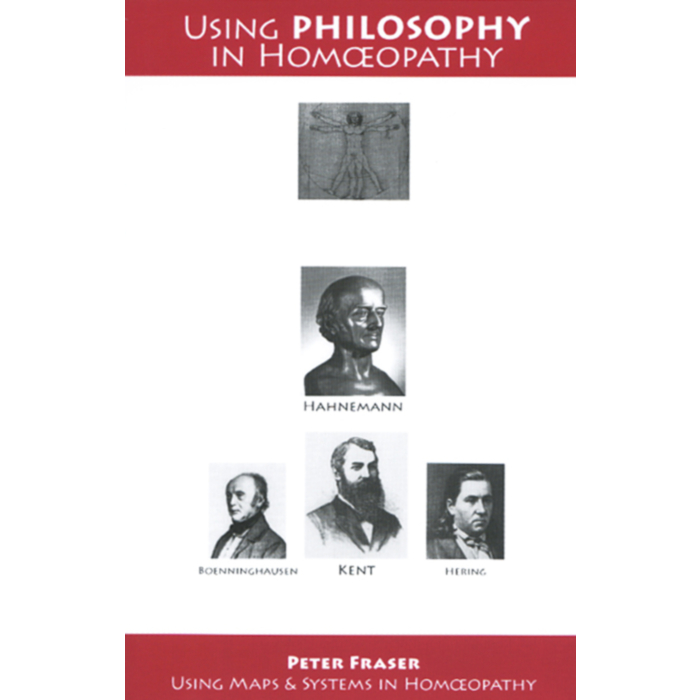Using Philosophy in Homoeopathy
Share on social media
Homopathic philosophy often seems abstruse and impractical, however when used properly it can be a powerful and immensely practical tool not only for finding the remedy but for managing the case.
Using Philosophy in Homoeopathy We as homoeopaths are privileged to practise one of the few philosophically based systems of medicine.This book outlines a short history of the development of homoeopathic philosophy.It then gives a clear exposition of the basic principles on which the philosophy rests. In the third part the ways in which this philosophy is applied to the process of case taking and remedy selection are described. This is a practical tool that brings philosophy down to earth and into the
consulting room.
| ISBN | 9781874581277 |
|---|---|
| Author | Peter Fraser |
| Type | Paperback |
| Language | English |
| Publication Date | 2008 |
| Pages | 54 |
| Publisher | Winter Press |
| Review | This book review is reprinted from Volume 22, Autumn 2009 edition, with permission from Homeopathic Links. Reviewed by Dr. Joseph Rozencwajg, MD, PhD, NMD, New Zealand This book is part of the series "Using maps and systems in Homoeopathy" by Peter Fraser. He discusses concisely but very clearly the basic principles of homeopathy: like cures like, the single remedy and the minimum dose as well as the basic principles to follow during the first and second consultation, how to determine the first prescription and to evaluate its outcome, Hering's Law, and the follow-up. It is strictly, not to say narrowly, classical, leaving very little room for any other approach although there is a clear and welcome distinction between what must be cured and the whole situation of the patient, and accordingly what to include and exclude from the repertorisation in order to have results. Everything else, any other approach or method, is not homeopathy. So be it... What is most welcome in this booklet is the simplification and clarity of the definitions and the notions that are to be our guidelines during a consultation. No arcane philosophical theories, but simple and clear guidelines that leave no doubt whatsoever about what Peter Fraser sees as the business of a classical homeopath. A highly recommended book! |
Review
This book review is reprinted from Volume 22, Autumn 2009 edition, with permission from Homeopathic Links.
Reviewed by Dr. Joseph Rozencwajg, MD, PhD, NMD, New Zealand
This book is part of the series "Using maps and systems in Homoeopathy" by Peter Fraser.
He discusses concisely but very clearly the basic principles of homeopathy: like cures like, the single remedy and the minimum dose as well as the basic principles to follow during the first and second consultation, how to determine the first prescription and to evaluate its outcome, Hering's Law, and the follow-up.
It is strictly, not to say narrowly, classical, leaving very little room for any other approach although there is a clear and welcome distinction between what must be cured and the whole situation of the patient, and accordingly what to include and exclude from the repertorisation in order to have results. Everything else, any other approach or method, is not homeopathy.
So be it...
What is most welcome in this booklet is the simplification and clarity of the definitions and the notions that are to be our guidelines during a consultation. No arcane philosophical theories, but simple and clear guidelines that leave no doubt whatsoever about what Peter Fraser sees as the business of a classical homeopath.
A highly recommended book!

